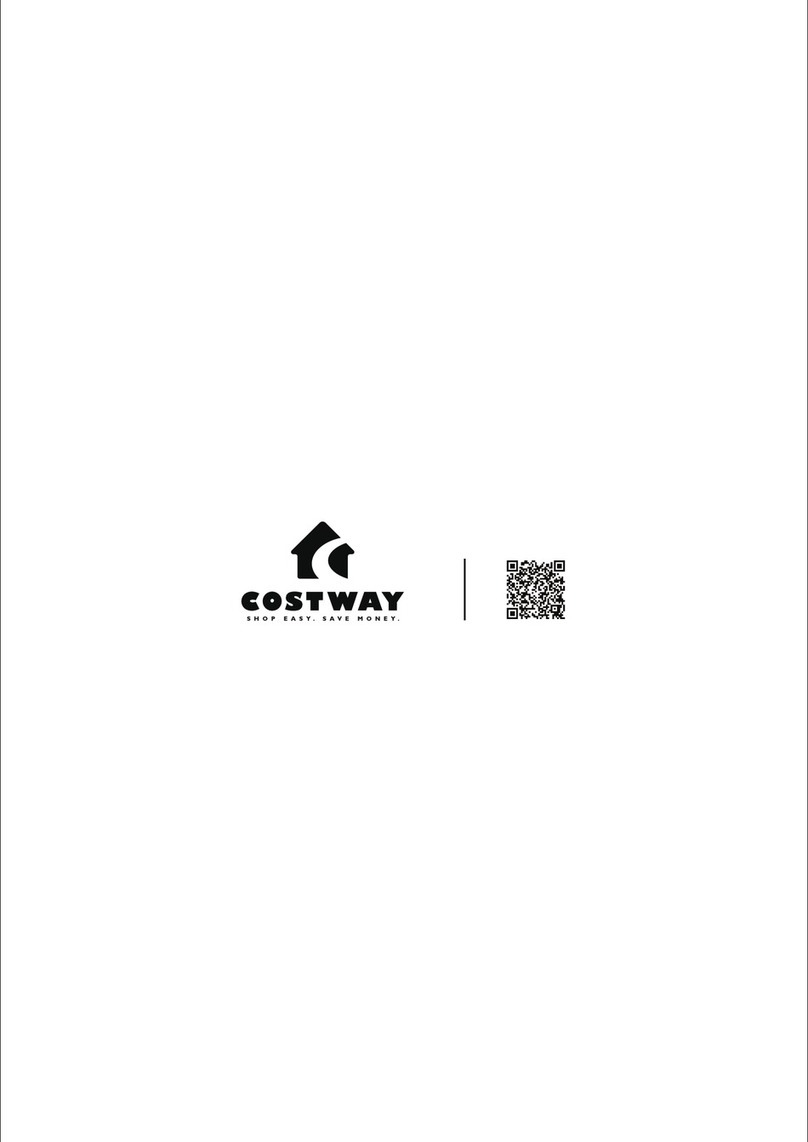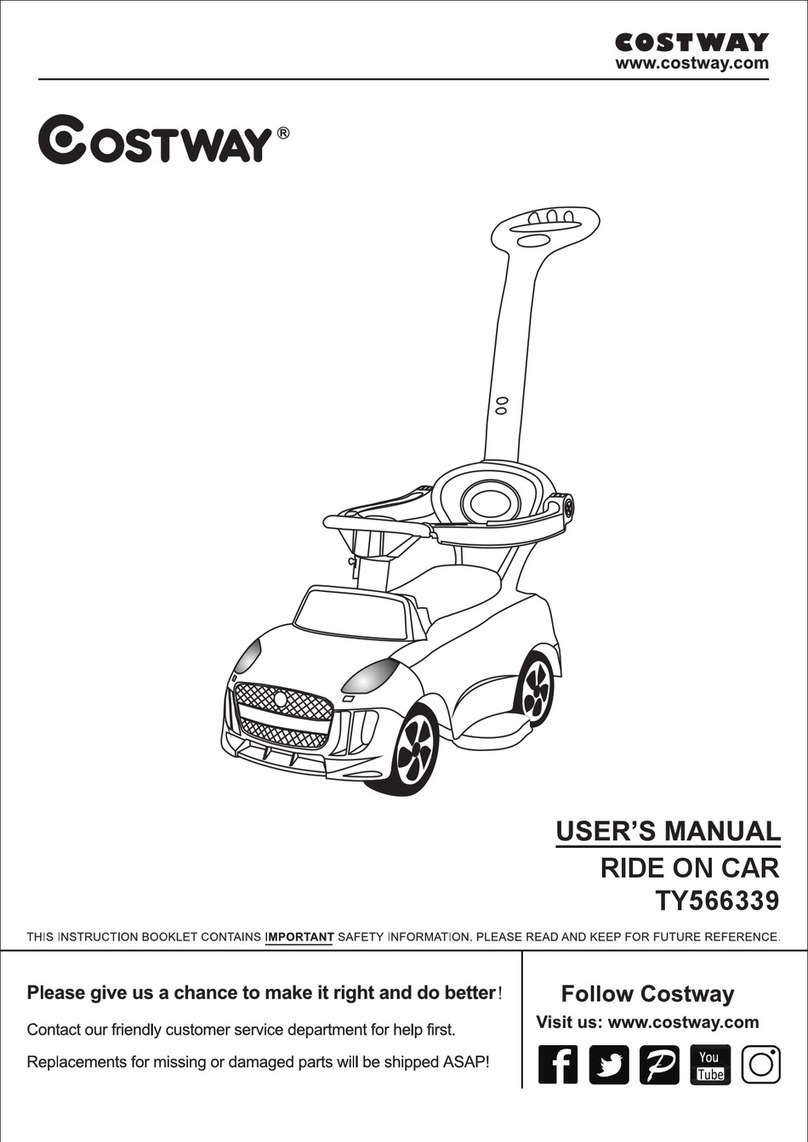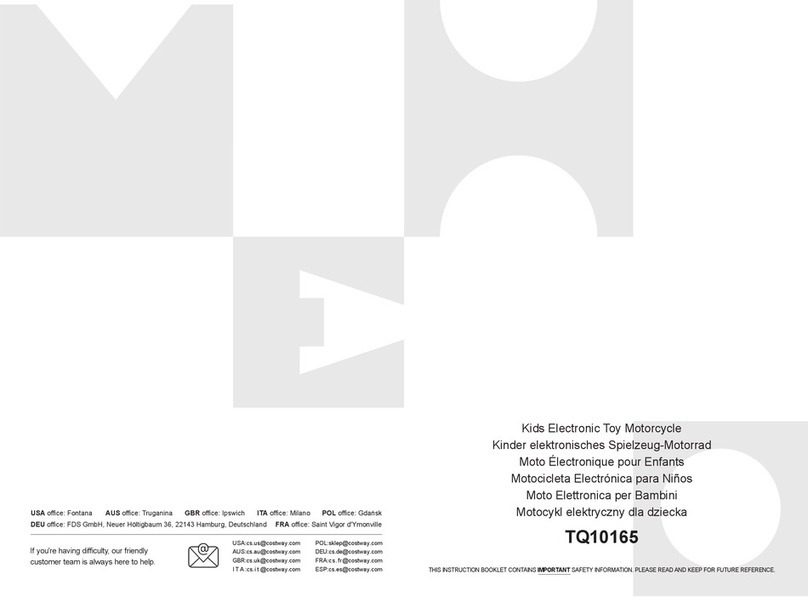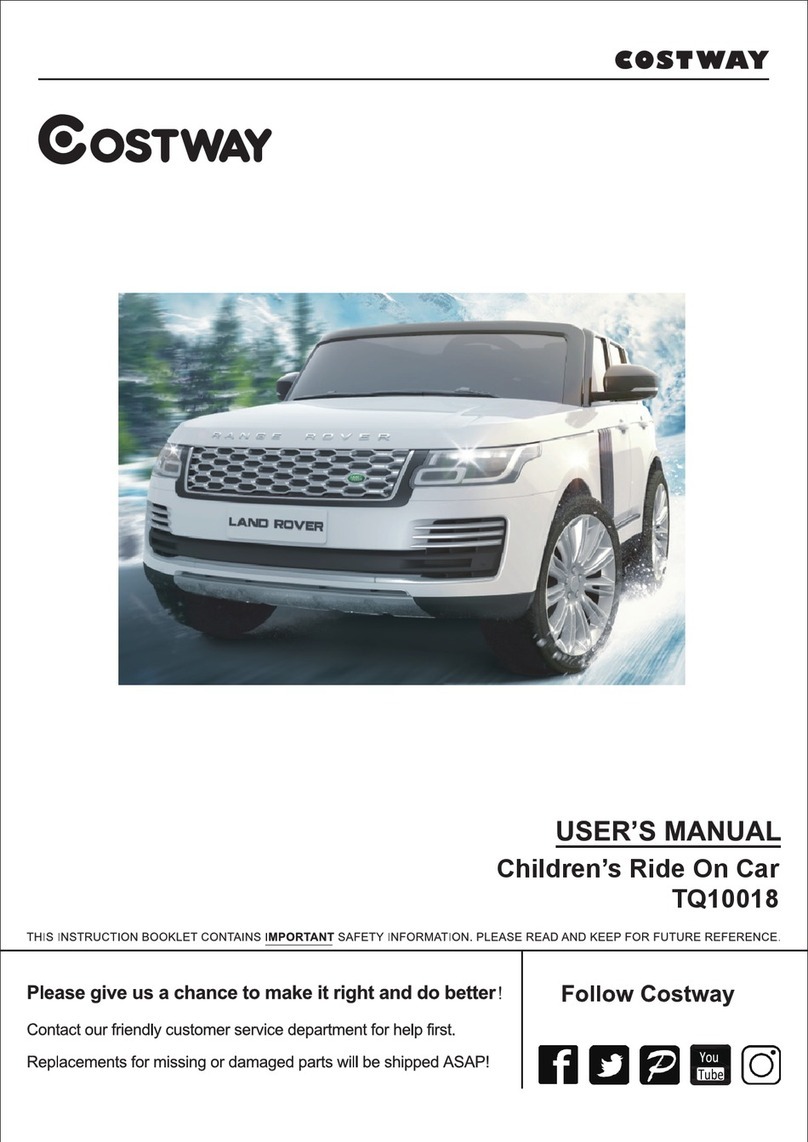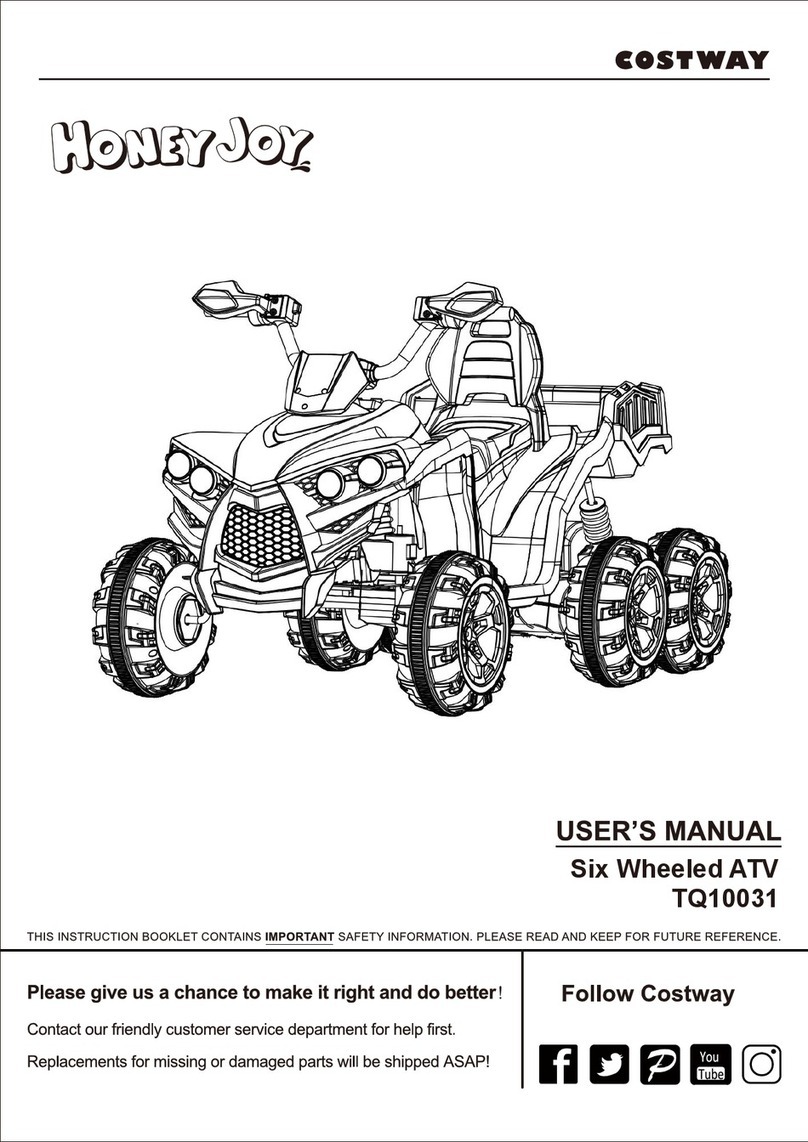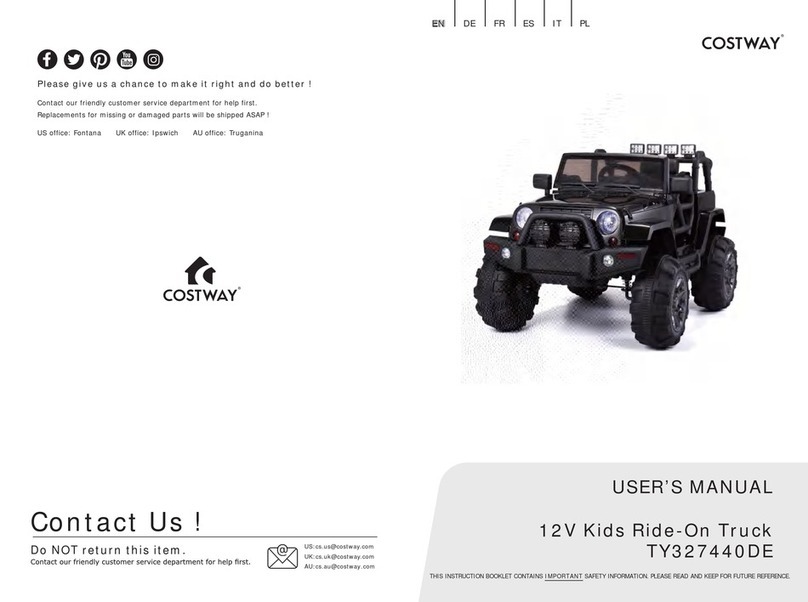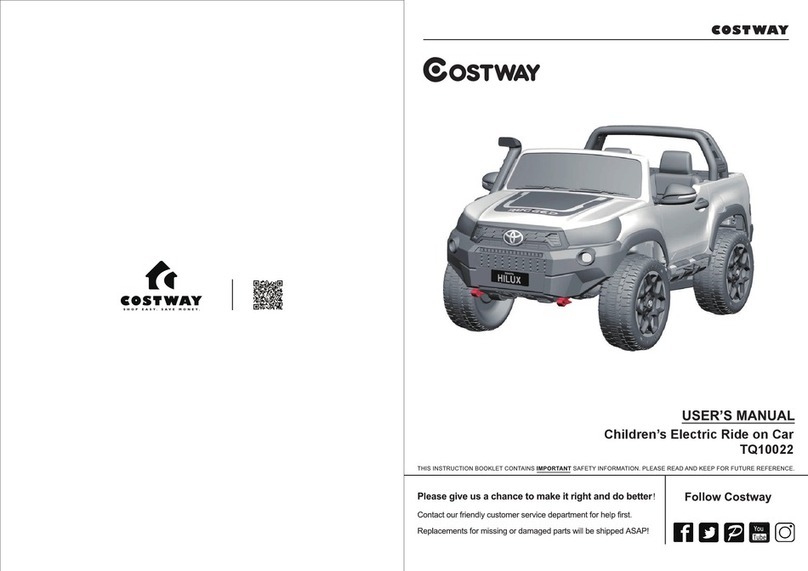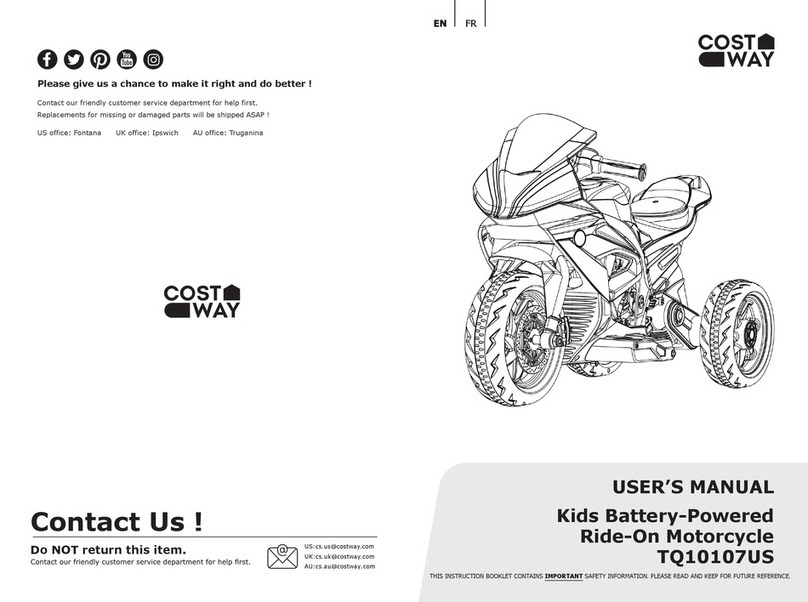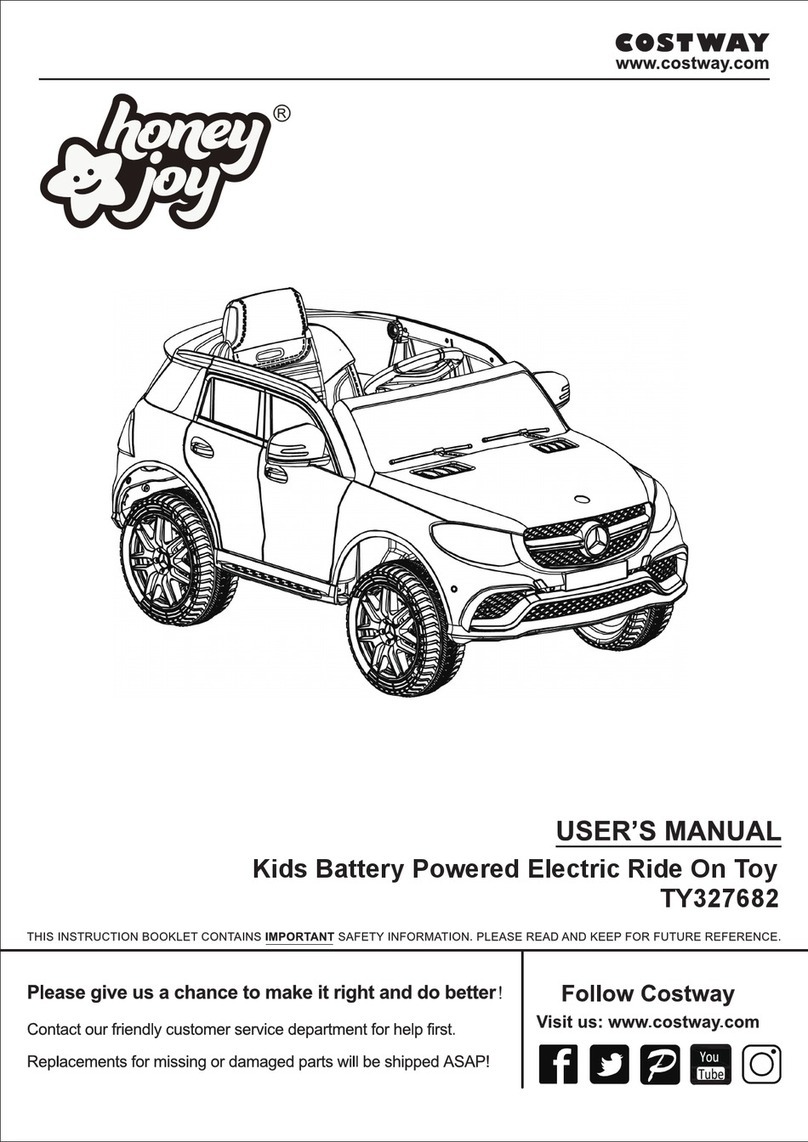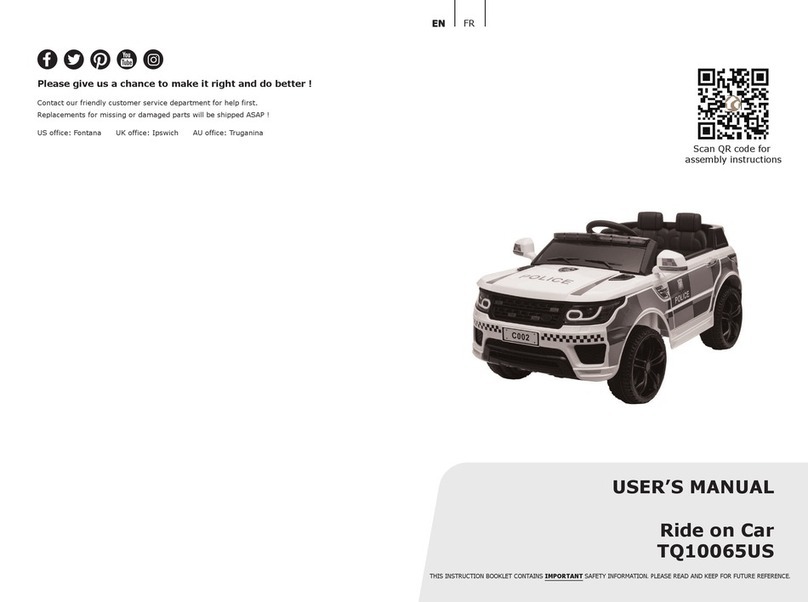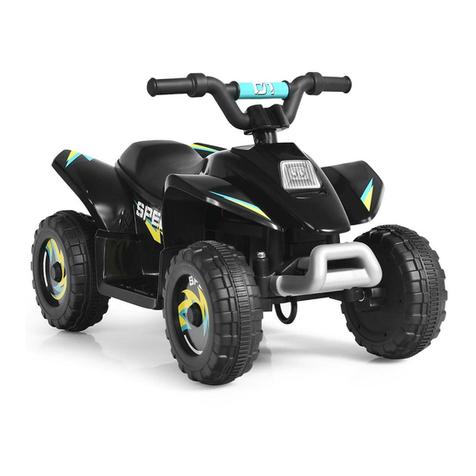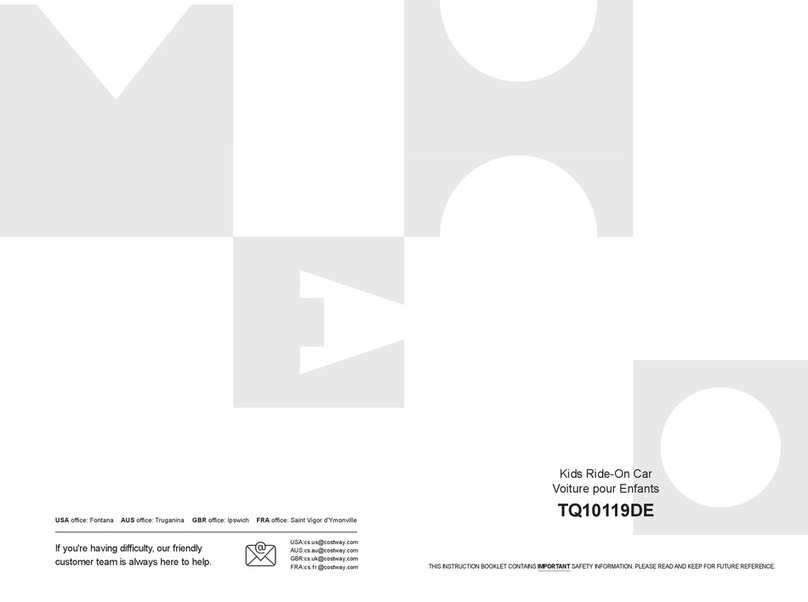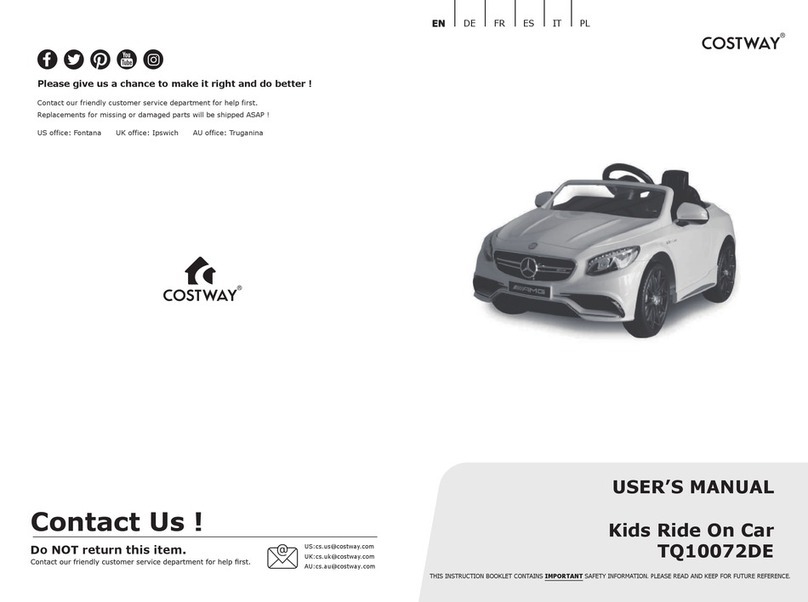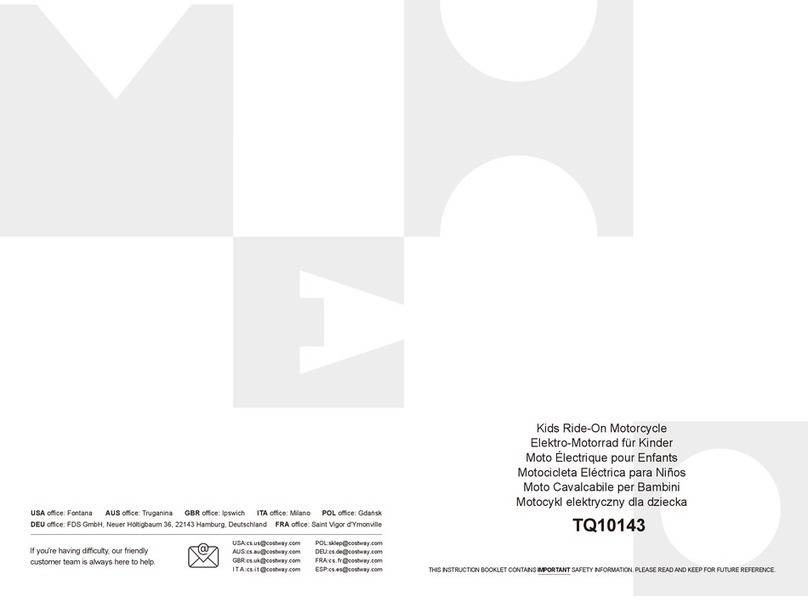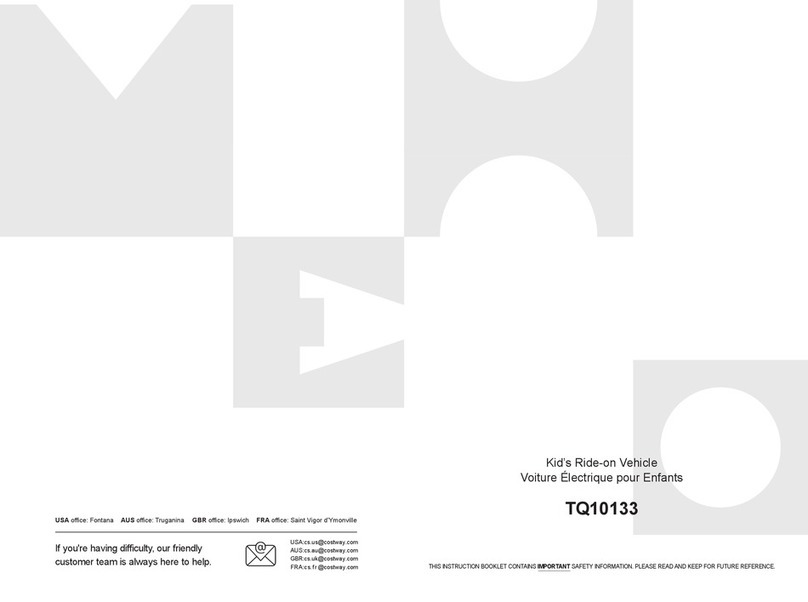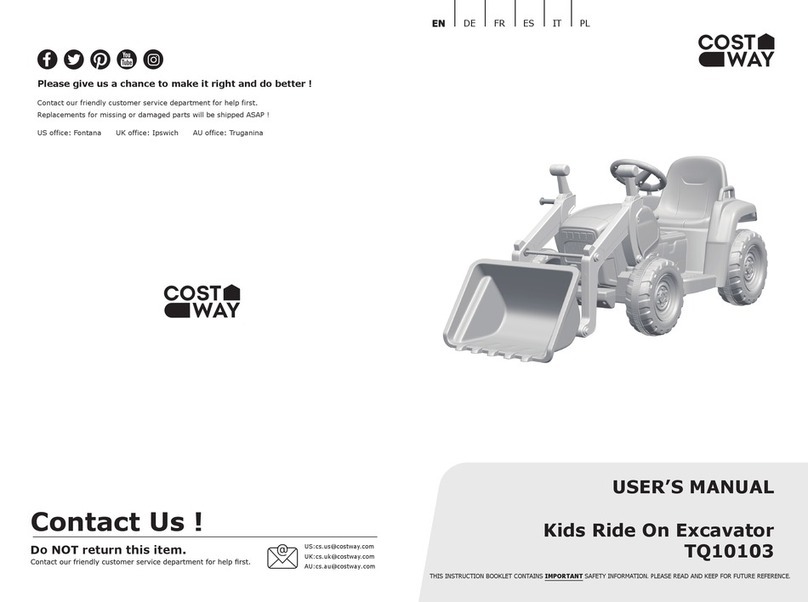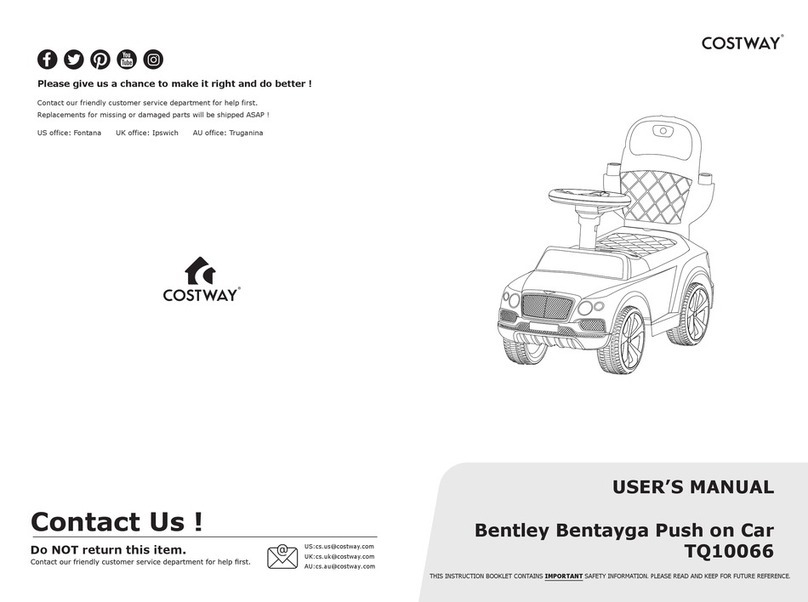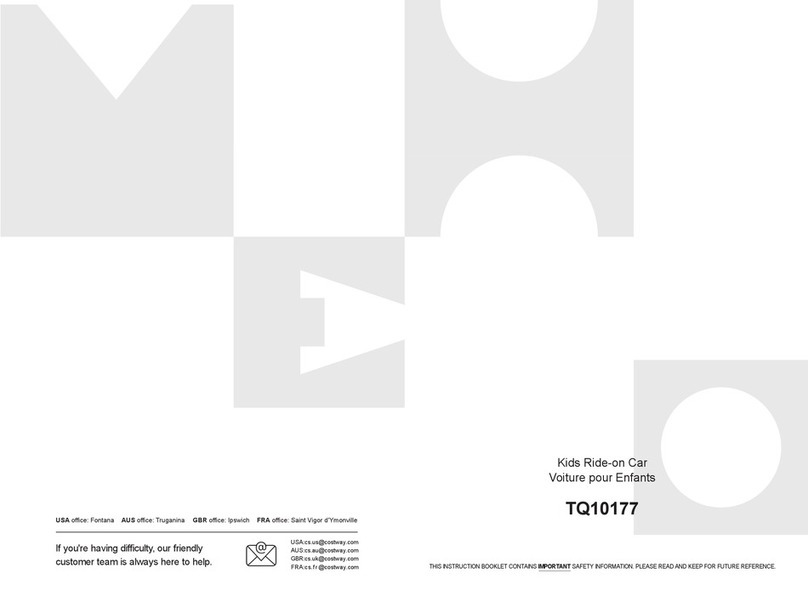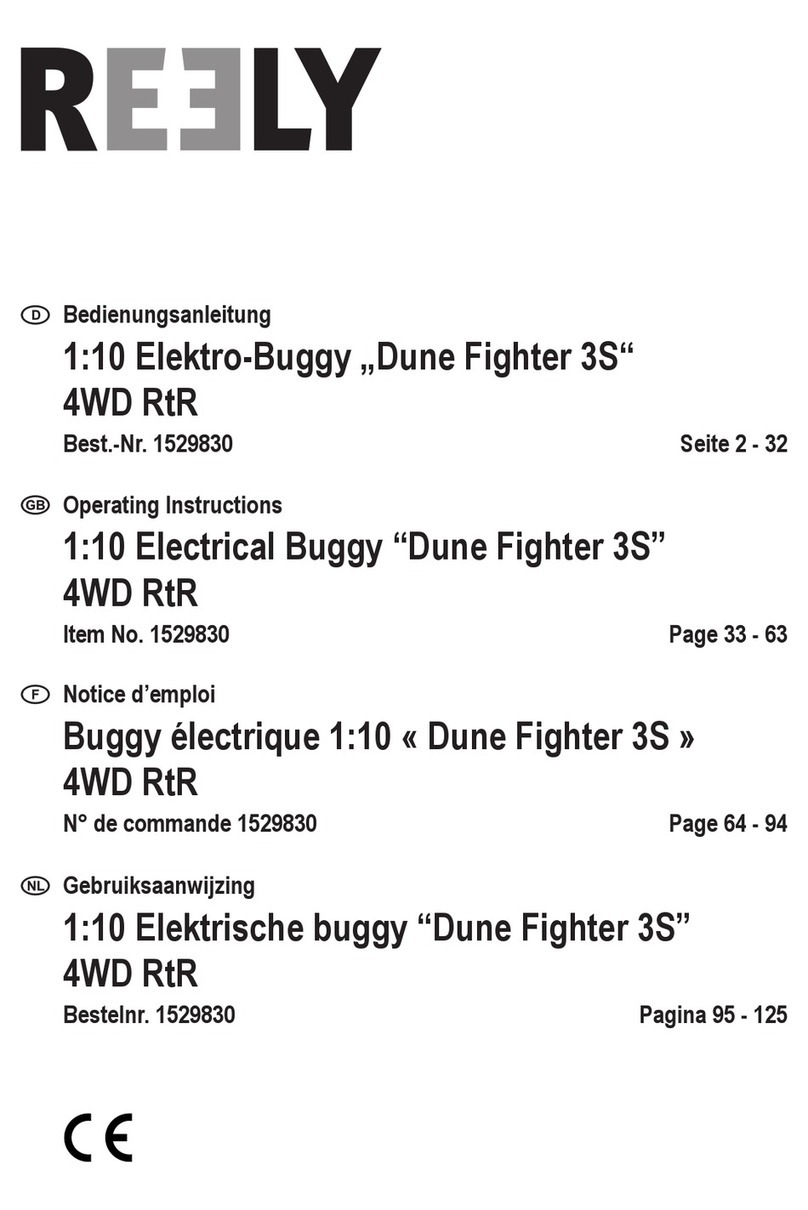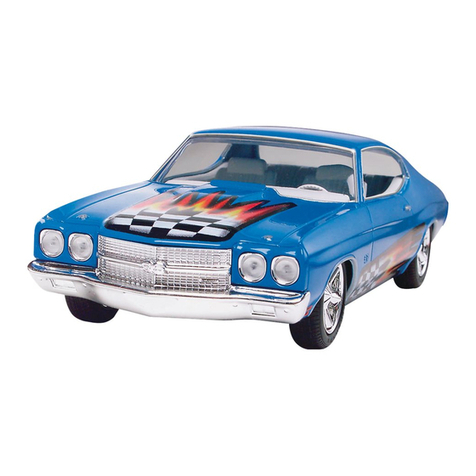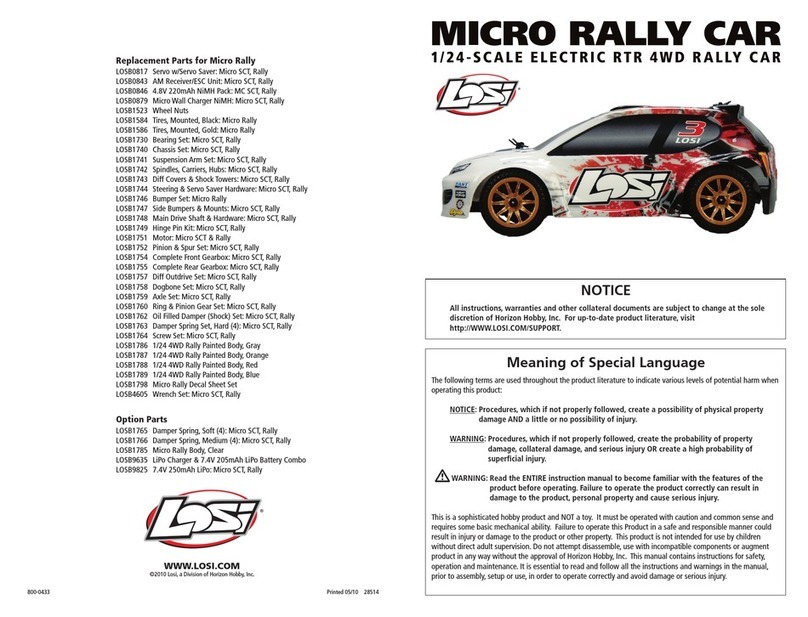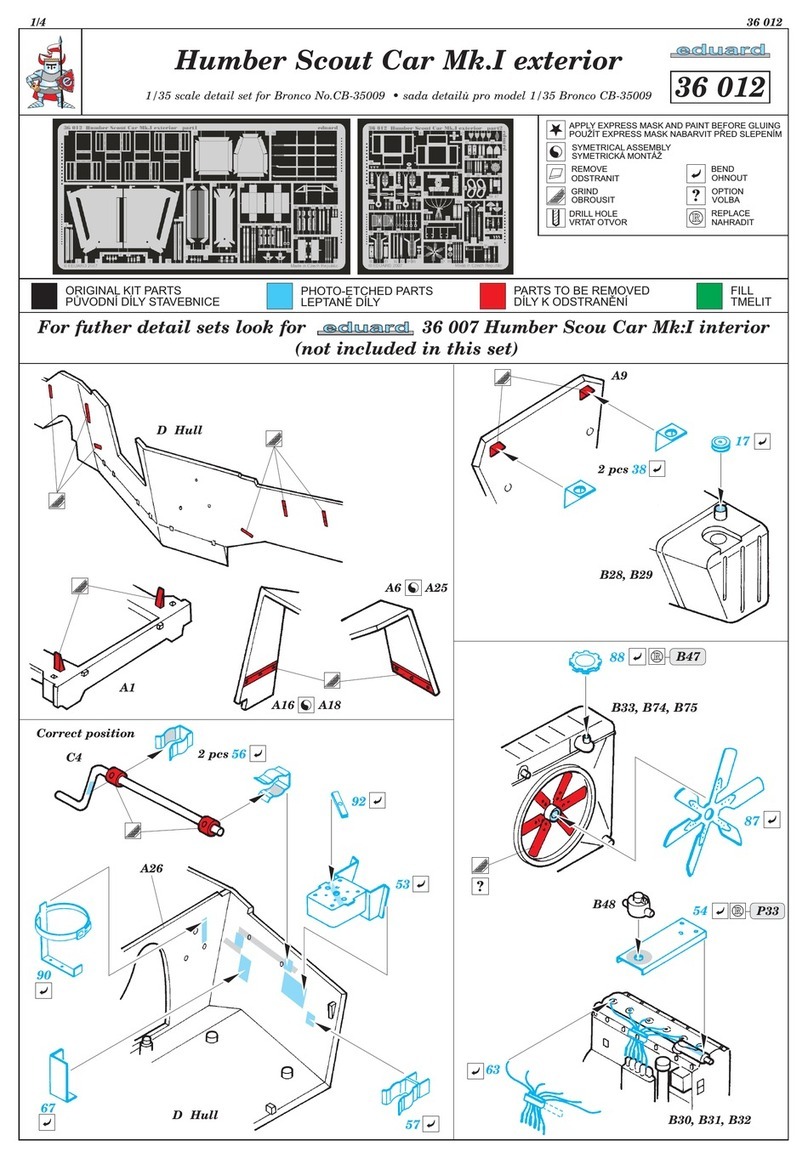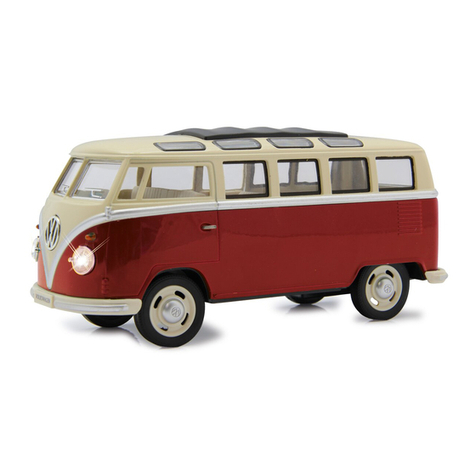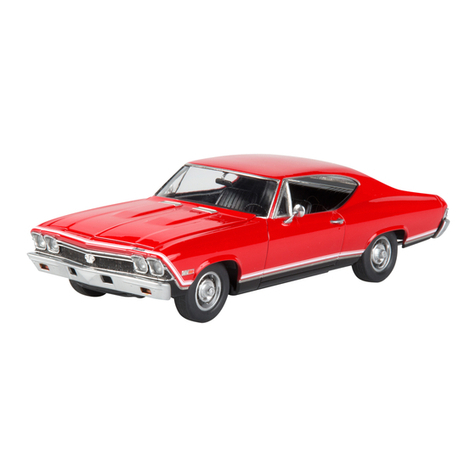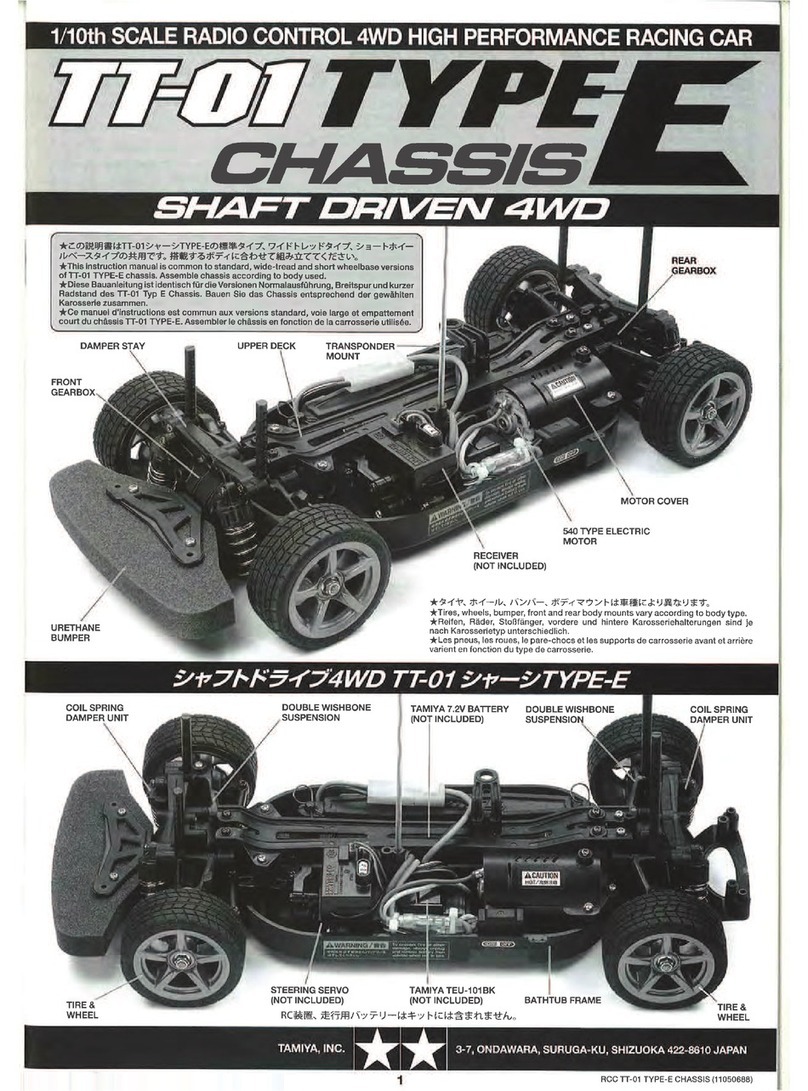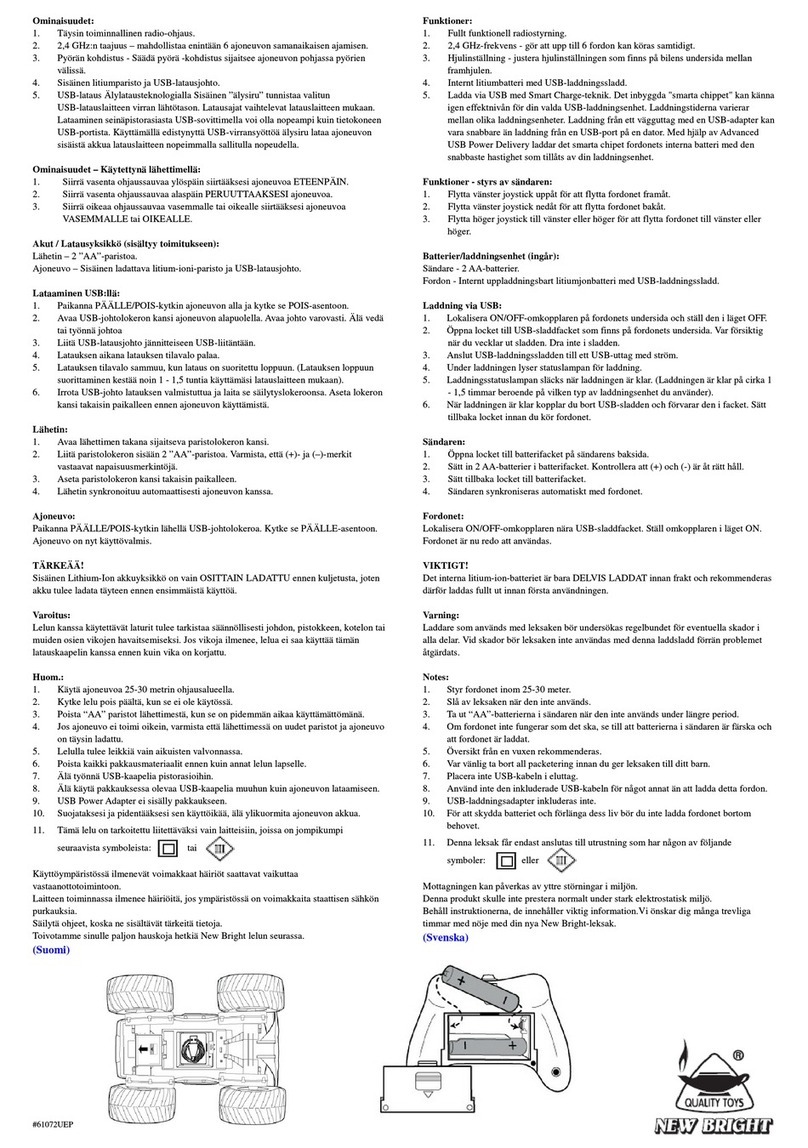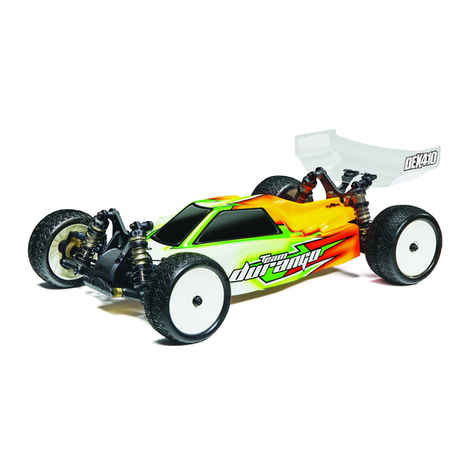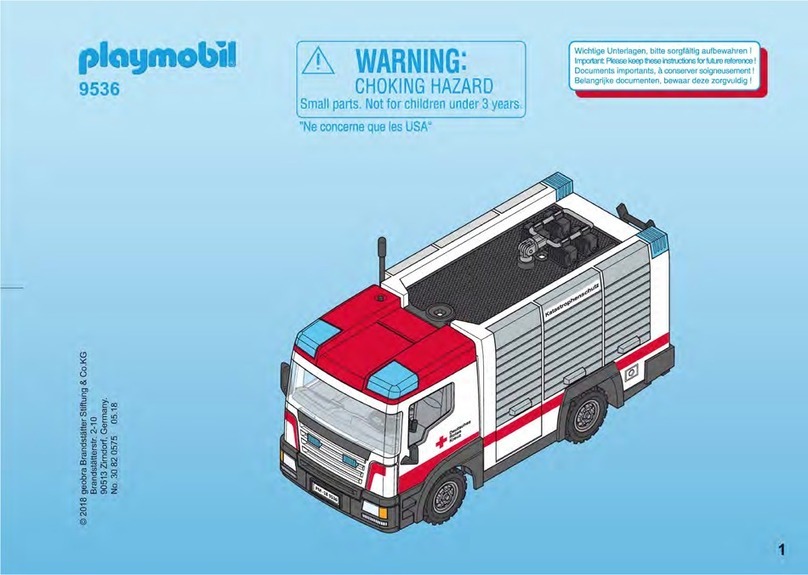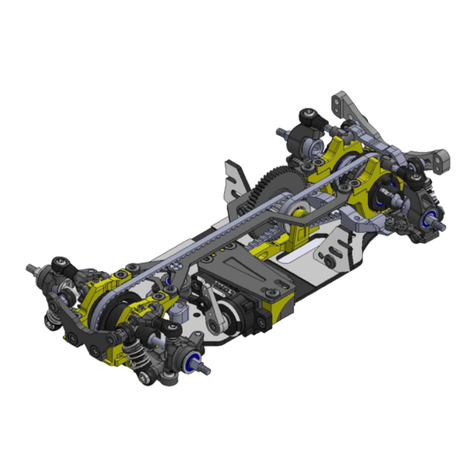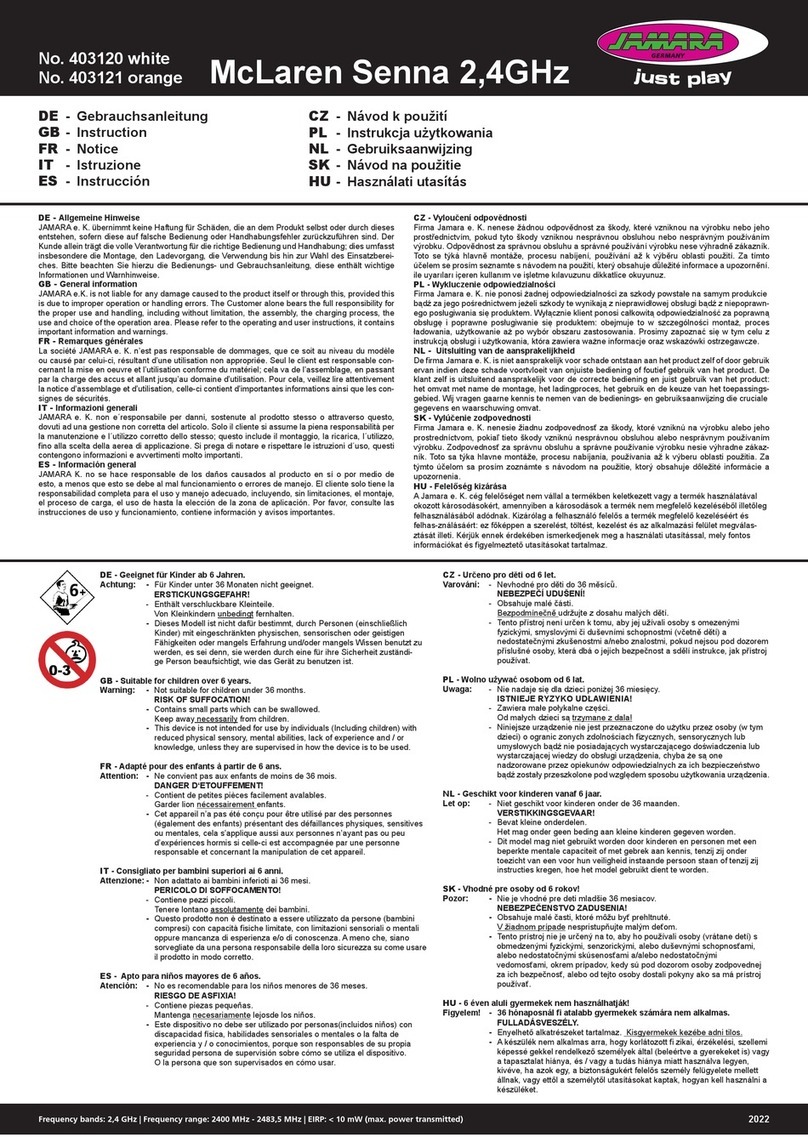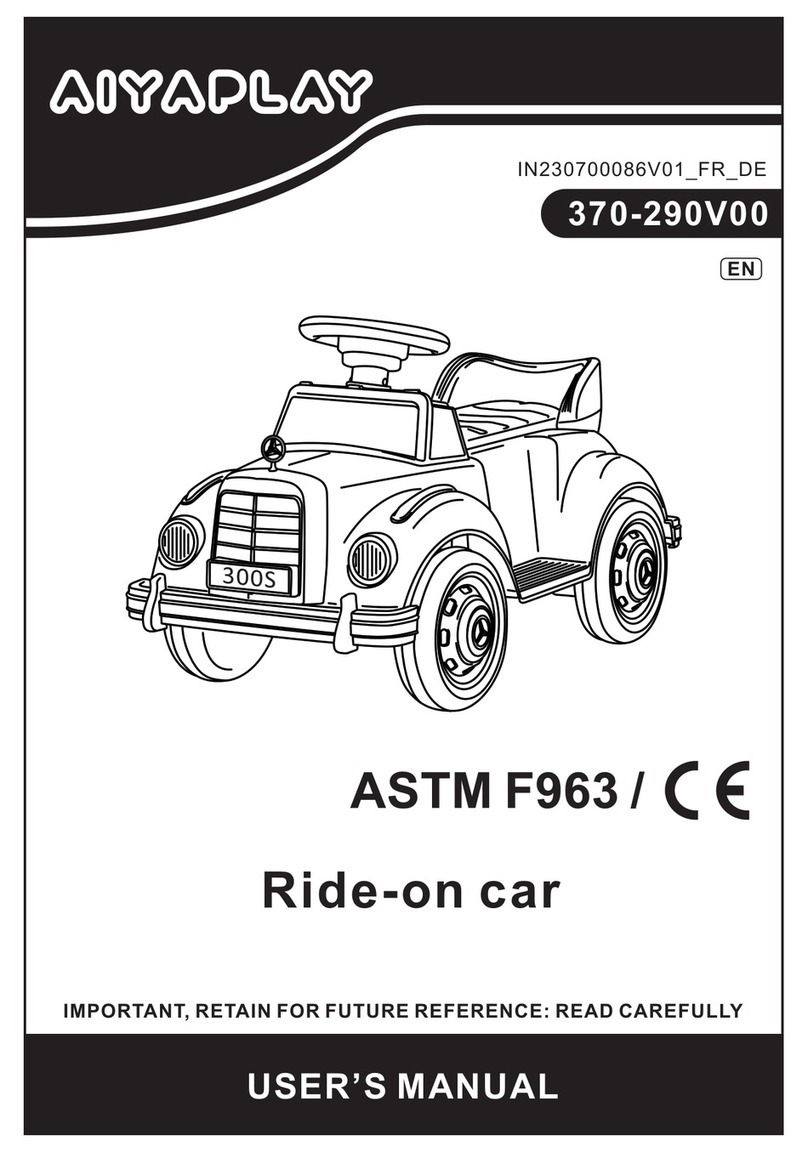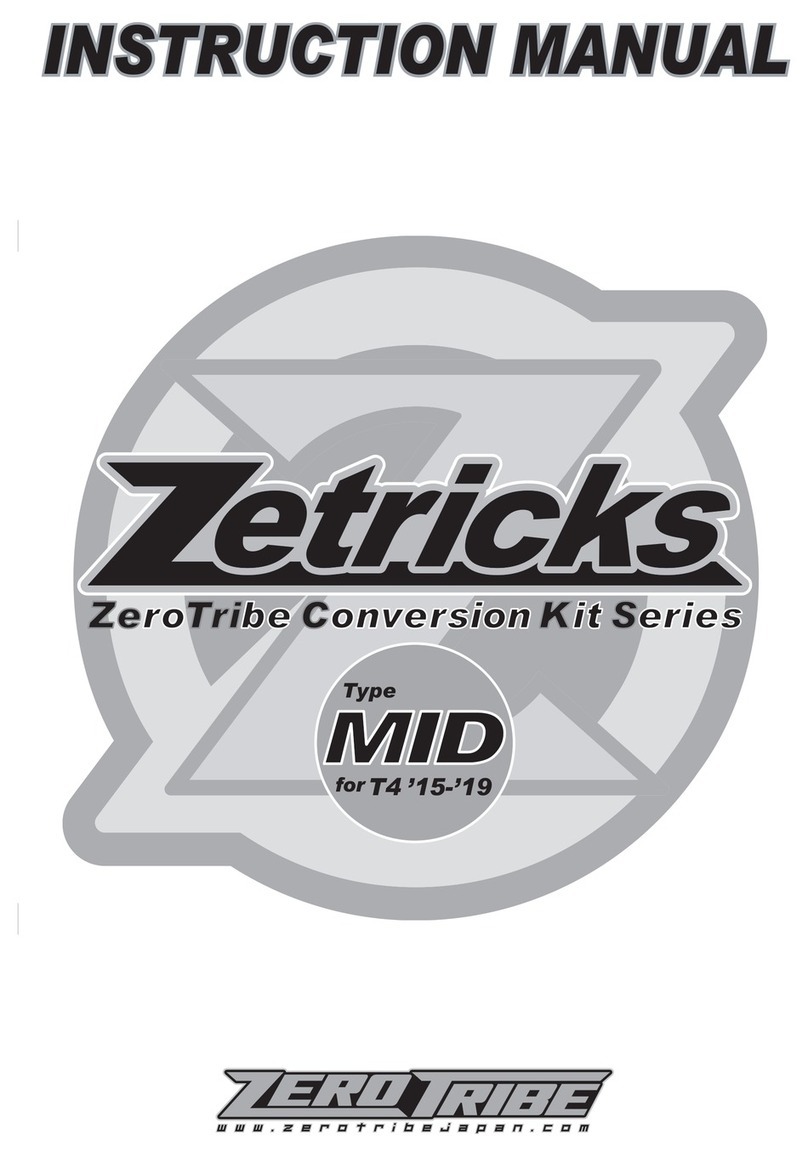
Completely read through this manual and the troubleshooting guide table
before calling. If you still need help resolving the problem, please contact us.
● It is parents’ responsibility to check main parts of the toy before using, must
regularly examine for potential hazard, such as the battery, charge, cable or
cord, plug, screws are fastening enclosure of other parts and that in the event
of such damage, the toy must not be until that damage had been properly
removed.
● Make sure the plastic parts of the vehicle are not cracked or broken.
● Occasionally use a lightweight oil to lubricate moving parts such as wheels.
● Park the vehicle indoors or cover it with a tarp to protect it from wet weather.
● Keep the vehicle away from sources of heat, such as stoves and heaters.
Plastic parts may melt.
● Recharge the battery after each use. Only an adult can handle the battery.
Recharge the battery at least once a month when the vehicle is not being
used.
● Do not wash the vehicle with a hose. Do not wash the vehicle with soap and
water. Do not drive the vehicle in rainy or snowy weather. Water will damage
the motor, electric system and battery.
● Clean the vehicle with a soft, dry cloth. To restore shine to plastic parts, use a
non-wax furniture polish. Do not use car wax. Do not use abrasive cleaners.
● Do not drive the vehicle in loose dirt, sand or fine gravel which could damage
moving parts, motors or the electric system.
● When not using, all the electrical source should be turn off. Turn off the power
switch and disconnect the battery connection.
This device complies with Part 15 of the FCC Rules. Operation is subject to
the following two conditions: (1) this device may not cause harmful
interference. (2) this device must accept any interference received, including
interference that may cause undesired operation.
Changes or modifications not expressly approved by the party responsible for
compliance could void the user's authority to operate the equipment.
This equipment has been tested and found to comply with the limits for a
Class B digital device, pursuant to part 15 of the FCC Rules. These limits are
designed to provide reasonable protection against harmful interference in a
residential installation. This equipment generates uses and can radiate radio
frequency energy and, if not installed and used in accordance with the
instructions, may cause harmful interference to radio communications.
However, there is no guarantee that interference will not occur in a particular
installation. If this equipment does cause harmful interference to radio or
television reception, which can be determined by turning the equipment off
and on, the user is encouraged to try to correct the interference by one or
more of the following measures:
—Reorient or relocate the receiving antenna.
—Increase the separation between the equipment and receiver.
—Connect the equipment into an outlet on a circuit different from that to which
the receiver is connected.
—Consult the dealer or an experienced radio/TV technician for help.
● Warning: Make sure the battery is completely drained.
● Use a screwdriver to unscrew the screws on the battery box fixing strip, and
remove the fixing strip to take out the battery, and then unplug the two
connecting wires on the battery.
● Carefully remove the battery or accumulator.
● The battery or accumulator and the device can now be disposed of separately.
8. Maintaining Caution:
The following batteries or accumulators are contained in this
electronic device
Information on the safe removal of the batteries or accumulators
Batterietyp Chemisches System
6FM4.5 Blei (Pb)
FCC Statement
16 17
